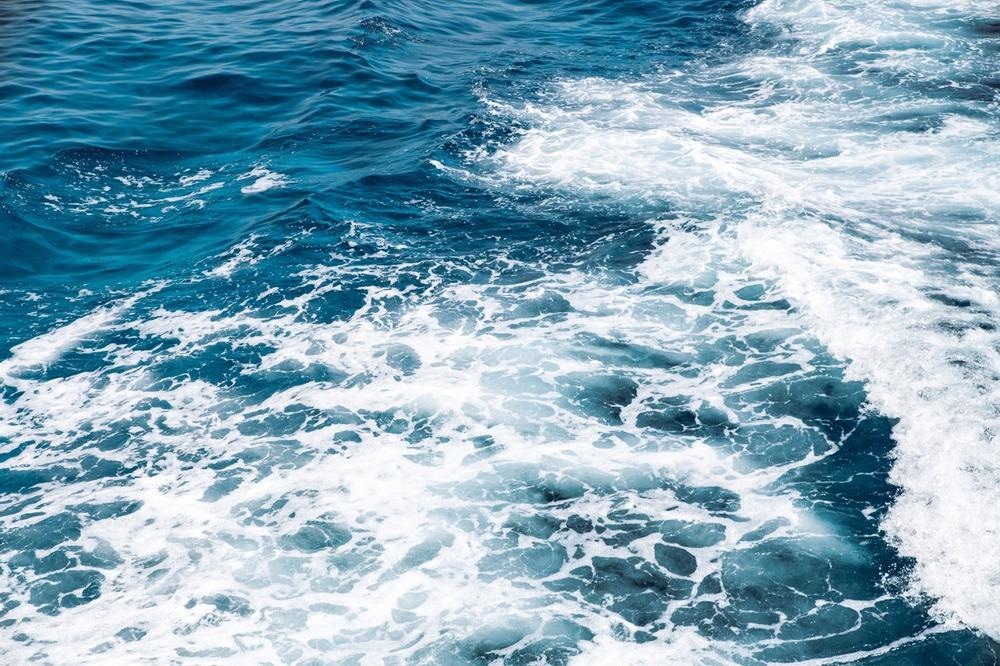Triboelectric nanogenerators (TENGs) offer a wide range of applications in self-powered sensory systems. In a paper published in the journal Nano Energy, a liquid-solid TENG, driven by waves, was created to provide a self-powered detection platform for tracking maritime environmental conditions.

Study: Ethylene chlorotrifluoroethylene/hydrogel-based liquid-solid triboelectric nanogenerator driven self-powered MXene-based sensor system for marine environmental monitoring. Image Credit: David Prado Perucha/Shutterstock.com
The Threats Posed by Sulfur Dioxide
As per the World Health Organization (WHO), air contamination kills over seven million people each year. Variations in humidity, temperature, and pollution levels may all contribute to the emergence of new contagious illnesses; thus, these factors must be tracked in real-time to understand how they vary.
Sulfur dioxide (SO2), a common airborne contaminant, is very harmful to human health and the ecosystem. Even modest quantities of SO2 may induce pulmonary and cardiac problems in humans, and prolonged SO2 contact in pregnant women can result in fetal birth abnormalities and death.
Sulfur dioxide readily causes acid rain, harming trees, land, and water. As a result, designing dependable gas detectors for speedy and precise sulfur dioxide sensing is critical.
Currently, most sulfur dioxide detectors need a power source, and some require high temperatures for optimal sensing, resulting in significantly high power usage and expenses. Since large-scale sensor installation requires vast energy, novel energy collecting technologies must be devised to run the sensing systems.
Harnessing Wave Energy using TENGs
Solar and wind power have seen considerable development as conventional sources of clean energy. Nonetheless, solar and wind energy generation consumes important ground resources, limiting its scalable implementation.
The ocean covers over 70% of this planet's surface and includes many sustainable clean energy, like tidal and wave power. Transforming wave energy to electricity has emerged as a crucial new focus in energy technology research.
Triboelectric nanogenerators (TENGs) predicated on triboelectrification and electrostatic linkage have sparked widespread interest due to their inexpensive nature, diverse component sources, and simple architecture. TENGs offer distinct benefits in capturing low-frequency energies (like wave energy).
The liquid-solid TENGs point the way forward for wave energy harvesting. A significant research avenue is the application of TENG-based detection systems in maritime ecosystem monitoring. However, the present research is confined to basic testing and is unable to monitor intricate coastal environment factors like pollutants thoroughly.
How can MXenes Help?
MXenes are a novel class of two-dimensional substances that include carbides, nitrides, and carbonitrides of transition metals and have promising applications in detectors, capacitors, and catalytic processes.
MXenes are used as a reducing agent to help with the reduction process of graphene oxide (GO), which improved the gas sensitivities even further. The self-powered detector possesses high responsiveness to NH3 and outstanding specificity. MXenes are now employed as a gas-detection substance for sensing a range of gases; however, hardly any research has been reported on using MXene-based sulfur dioxide detectors.
Key Findings of the Study
In this research, the team designed a self-powered detection system for maritime environment surveillance using a liquid-solid TENG driven by wave energy. To capture wave energy, the triboelectric nanogenerator was built utilizing ethylene chlorotrifluoroethylene (ECTFE) sheets and ionic hydrogel electrodes.
Creating an atomic scale electron-cloud potential-sink and the electric double layer (EDL) explained the interface electrification among ECTFE and water. The TENG's open-circuit peak-to-peak voltages and power density could approach 332 V and 1.85 W/m2, respectively.
The TENG-powered MXene/TiO2/SnSe detector, which possesses a high sensitivity (about 14 times greater than a resistive sensor), was produced to detect sulfur dioxide gas.
The TENG activated the self-powered sulfur dioxide detector, decreasing energy usage and considerably enhancing detector responsiveness. A self-powered maritime environment tracking framework was designed to further illustrate the applicability prospects of the designed TENG and sulfur dioxide detector.
Sensor data from the self-powered device may be sent in real-time to cellphones and other modules, allowing them to track humidity, temperature, sulfur dioxide gas levels, water surface levels, and other maritime environment parameters.
The gas detector's humidity and temperature error debugging was performed by incorporating and analyzing the sensory system's information with a back propagation neural network framework.
Reference
Wang, D., Zhang, D. et al. (2022). Ethylene chlorotrifluoroethylene/hydrogel-based liquid-solid triboelectric nanogenerator driven self-powered MXene-based sensor system for marine environmental monitoring. Nano Energy. Available at: https://doi.org/10.1016/j.nanoen.2022.107509
Disclaimer: The views expressed here are those of the author expressed in their private capacity and do not necessarily represent the views of AZoM.com Limited T/A AZoNetwork the owner and operator of this website. This disclaimer forms part of the Terms and conditions of use of this website.